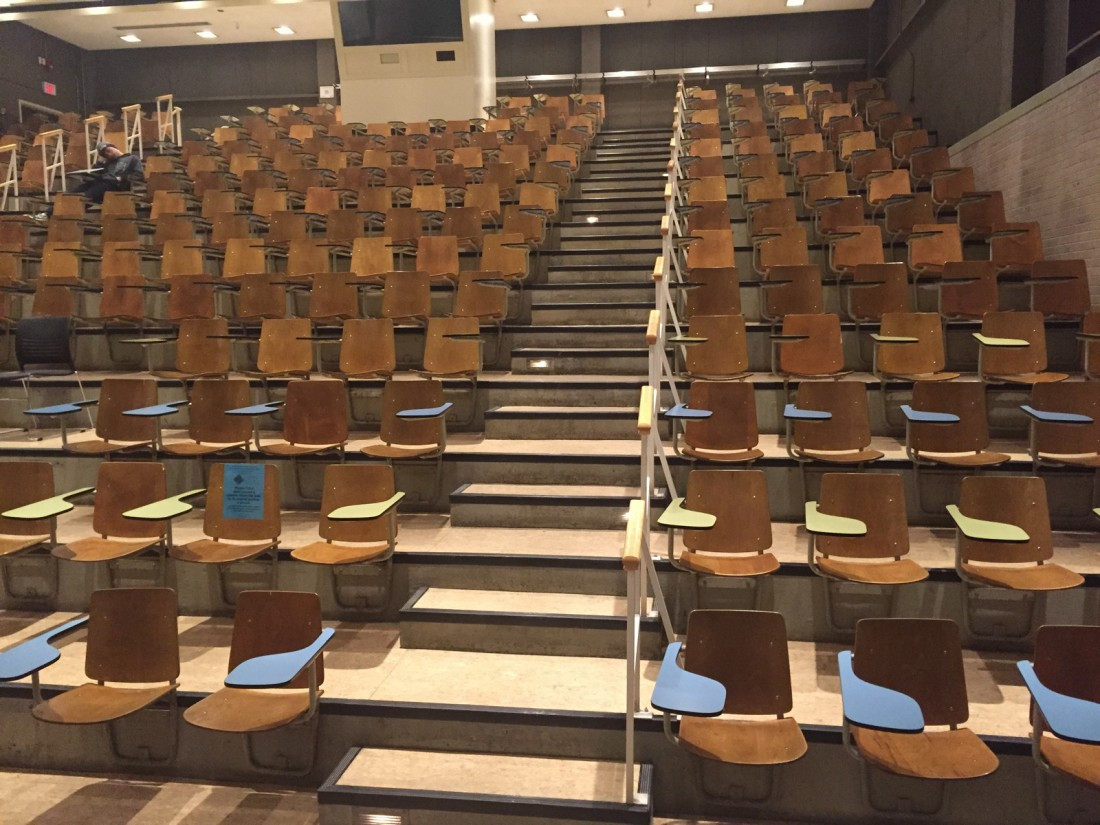Should they stay or should they go
Low retention rates at U of W being carefully studied
The University of Winnipeg (U of W) is trying to discover what keep students at the school, and what factors inspire them to go elsewhere.
Retention is defined as the number of full-time, first-year undergraduate students enrolled in a fall term who return to the institution in the following year’s fall term.
For a long time, the U of W’s retention rates have not been much more than 70 per cent and compared to other institutions in Canada – namely the University of Manitoba (U of M), which has about an 85 per cent retention rate – they may look relatively low. In most universities in Ontario, the retention rates are higher than 80 per cent.
According to Dr. Jodene Baker, the director of the Office of Institutional Analysis, one of the main reasons for the lower rates is that the U of W offers several pre-professional programs and some students come to those with the intention of transferring to the U of M.
To figure out exactly what the retention numbers mean, Baker’s office is now doing an extensive study.
“We want to understand what does it really mean to say that 30 per cent of the students leave. So one of the issues is we want to try to find out how many of the students started off in pre-professional programs, because we don’t really want to count it as a failure if they’ve always intended to go to the U of M,” Baker says.
“We’re doing a survey of students who left so we’re able to identify which students are in the 30 per cent,” Baker adds.
“We’re surveying them to ask them about their experiences here to find out what factors may have contributed to them leaving, and then start to find out maybe what we can do to help them stay.”
Zach Rostosky, a third-year U of W student who transferred to the U of M, says that even though he liked the small class sizes, he needed to transfer to pursue his career goal.
“University of Winnipeg didn’t have some of the professional programs, one of them is architectural. Now I’m in the environmental studies (program), but the U of W didn’t have it either,” Rostosky says.
Another reason for lower retention results at the U of W may lie in another quality somewhat unique to the school.
“University of Winnipeg is very focused on accessibility. We want to accept students from a wide range of backgrounds, we don’t have a minimum high school grade requirement,” Baker says.
“But there is then a potential for a greater risk, so if students come and they didn’t do as well in high school, they might have a bit harder time academically here, so this comes back to us now really wanting to understand what is the best way then to support them.”
As with many statistical analyses, it’s important for the U of W to identify the goal of its study. And despite the seemingly ideal goal of a 100 per cent retention rate, that may not be the right number in this case.
“Some people would argue that you wouldn’t want it to be a 100 per cent because for some people they come here to university and it’s just not for them,” Baker says.
“Part of the responsibility of the university is to help that student to figure out what is right for them. Is it getting a job? Is it going to U of M or Red River? So we know that we wouldn’t want to be at 100 per cent because that would mean we are kind of saying to everyone, ‘You’re here, you have to stay here.’”
The study will take several months to complete and the U of W estimates it will be finished in April.
Published in Volume 70, Number 11 of The Uniter (November 19, 2015)







